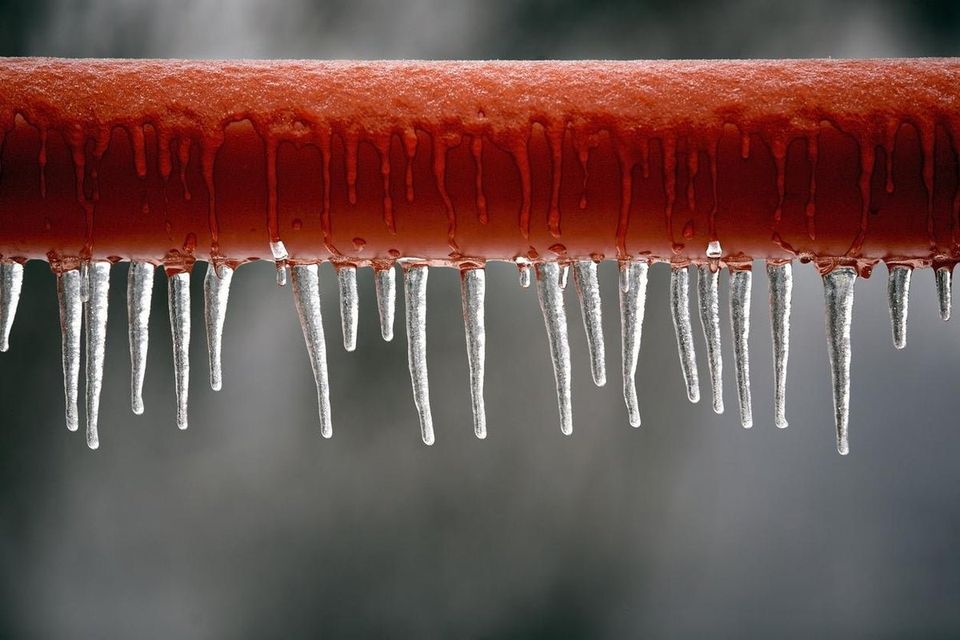Crucial Advice for Avoiding Frozen Pipes in Winter Seasons
Crucial Advice for Avoiding Frozen Pipes in Winter Seasons
Blog Article
Every person has his or her own thinking with regards to How to Prevent Your Pipes From Freezing.

Winter can damage your pipes, especially by freezing pipelines. Here's exactly how to avoid it from happening and what to do if it does.
Intro
As temperatures drop, the danger of icy pipelines rises, possibly resulting in expensive fixings and water damage. Recognizing how to prevent icy pipelines is important for homeowners in chilly climates.
Avoidance Tips
Shielding at risk pipes
Cover pipes in insulation sleeves or make use of heat tape to protect them from freezing temperature levels. Focus on pipes in unheated or external areas of the home.
Heating techniques
Keep interior areas adequately heated, particularly locations with pipes. Open cabinet doors to permit cozy air to flow around pipelines under sinks.
Exactly how to identify icy pipes
Look for lowered water flow from taps, unusual smells or noises from pipelines, and visible frost on subjected pipes.
Long-Term Solutions
Structural adjustments
Take into consideration rerouting pipes away from outside walls or unheated locations. Include added insulation to attics, basements, and crawl spaces.
Upgrading insulation
Invest in premium insulation for pipelines, attics, and wall surfaces. Appropriate insulation assists keep regular temperature levels and decreases the threat of frozen pipes.
Shielding Outside Pipes
Yard hoses and outside taps
Disconnect and drain pipes garden hoses before winter season. Install frost-proof spigots or cover exterior faucets with insulated caps.
Understanding Icy Pipes
What causes pipelines to freeze?
Pipelines ice up when exposed to temperature levels below 32 ° F (0 ° C) for expanded periods. As water inside the pipelines ices up, it broadens, taxing the pipe walls and possibly causing them to rupture.
Threats and damages
Frozen pipelines can bring about supply of water disturbances, residential property damages, and expensive repair work. Ruptured pipelines can flooding homes and create extensive structural damage.
Signs of Frozen Pipeline
Determining frozen pipes early can prevent them from bursting.
What to Do If Your Pipes Freeze
Immediate activities to take
If you believe icy pipelines, keep faucets open to relieve stress as the ice thaws. Utilize a hairdryer or towels soaked in warm water to thaw pipelines slowly.
Conclusion
Protecting against icy pipes needs positive actions and quick actions. By comprehending the reasons, indicators, and safety nets, homeowners can protect their pipes during cold weather.
5 Ways to Prevent Frozen Pipes
Drain Outdoor Faucets and Disconnect Hoses
First, close the shut-off valve that controls the flow of water in the pipe to your outdoor faucet. Then, head outside to disconnect and drain your hose and open the outdoor faucet to allow the water to completely drain out of the line. Turn off the faucet when done. Finally, head back to the shut-off valve and drain the remaining water inside the pipe into a bucket or container. Additionally, if you have a home irrigation system, you should consider hiring an expert to clear the system of water each year.
Insulate Pipes
One of the best and most cost-effective methods for preventing frozen water pipes is to wrap your pipes with insulation. This is especially important for areas in your home that aren’t exposed to heat, such as an attic. We suggest using foam sleeves, which can typically be found at your local hardware store.
Keep Heat Running at 65
Your pipes are located inside your walls, and the temperature there is much colder than the rest of the house. To prevent your pipes from freezing, The Insurance Information Institute suggests that you keep your home heated to at least 65 degrees, even when traveling. You may want to invest in smart devices that can keep an eye on the temperature in your home while you’re away.
Leave Water Dripping
Moving water — even a small trickle — can prevent ice from forming inside your pipes. When freezing temps are imminent, start a drip of water from all faucets that serve exposed pipes. Leaving a few faucets running will also help relieve pressure inside the pipes and help prevent a rupture if the water inside freezes.
Open Cupboard Doors
Warm your kitchen and bathroom pipes by opening cupboards and vanities. You should also leave your interior doors ajar to help warm air circulate evenly throughout your home.

I was shown that editorial about Prevent Frozen Pipes from an acquaintance on our other domain. Are you aware of anybody else who is in the market for the niche? Why not share it. Thank you so much for going through it.
Click Here Report this page